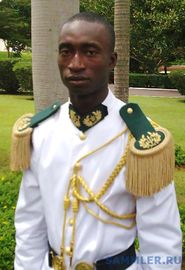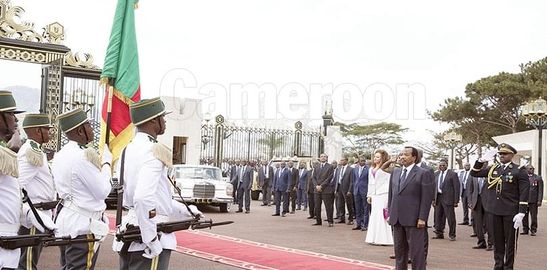Вооружённые силы Камеруна
Материал из ВикиВоины
Вооружённые силы Камеруна или FAC (сокр. от Forces armées camerounaises) — военная организация Республики Камерун, предназначенная для защиты свободы, независимости и территориальной целостности государства. Состоят из сухопутных войск, военно-морских сил и военно-воздушных сил.
История[править]
Cameroun, a former French possession, became independent in 1960; it was formed from the bulk of the former German colony of Kamerun which had passed into French administration. To it was added in 1961 one of the two parts of Kamerun that had been administered by Britain (the other opted for union with Nigeria). The State is a Federation, but the vastly larger Francophone area predominates. In addition to the division caused by its colonial past, Cameroun also has ethnic divisions, and a religious one in that the northern part of the territory has a considerable Muslim population. The country gradually became a one-party State; since 1960 the Head of State has been President A. Ahidjo. This continuity has, however, not been without opposition. In the last years of the colonial period a revolt broke out among the Bamileke people which continued for a period after independence and was only put down by French troops. Further trouble among the Bamileke reappeared in the late 1960s, Chinese support for the insurgents being alleged. French troops again played a part in the suppression, to all intents and purposes complete by 1970. The Cameroun authorities exacted severe punishments on those alleged to be leaders . By a new co-operation agreement with France signed in 1974, the French garrisons at Douala and Koutaba were finally withdrawn.
The army's roles are that of internal security and defence against threats from neighbours; Cameroun adjoins six countries. There has been friction with Nigeria which led to brief exchanges of fire by border guards. A 4 mile neutral corridor has been agreed. Suspicion of Congo's intentions — and support for Cameroun dissidents — occurs from time to time; in 1967 troops were sent to the border. Suspicion of Equatorial Guinea also exists and troops may also be deployed on this frontier. Cameroun forces were, of course, also committed to the suppression of the Bamileke risings, and in the containment of university unrest at Yaounde in 1973. The role of the air force was recently officially defined as the dropping of men and supplies, patrolling and rescue.
The Cameroun army is a small force that meets its country's modest needs.
Организация[править]
Cameroun's army consists of four infantry battalions each based in one of the country's four military districts, a reconnaissance company, a parachute company and some engineer, signals and transport units. The military districts are Yaounde, Kutuba, Douala and Baffoussam. The recruitment of the army was voluntary until 1975 when a system of obligatory mihtary training for all fit men to prepare them for service in the police, army or gendarmerie, was announced. French training facilities have been used since independence; a small French training staff still remains, and reports suggest a few French-born officers, probably contract personnel, present in Cameroun uniform.
Вооружение[править]
В Камеруне нет собственного военно-промышленного комплекса. Имеющееся стрелковое оружие, включая 81-мм миномёты, в основном французскими. Бронеавтомобилями разведывательных рот служат американские M8 Greyhound и британские Ferret. Артиллерия оснащена французскими 75-мм и 105-мм пушками, а также 57-мм зенитными пушками. Некоторые 105-мм пушки были заказаны из Бельгии для замены устаревшей британской 6-фунтовой пушки.
Униформа[править]
Как бывшая колония Франции, камерунские военные используют форму французского образца, за исключением кепи, которое они заменяют фуражкой или беретом.
Эмблемой сухопутных войск является львиная голова на фоне двух скрещенных мечей.
Галерея[править]
Солдат почетного караула Камеруна. Зеленые эполеты и петлицы характерны для армии Камеруна, на петлицах и эполетах изображение национального герба, сами эполеты — во французском стиле.
Солдаты почетного караула Камеруна в церемониальной форме.
Солдаты почетного караула Камеруна в церемониальной форме.
Солдаты почетного караула Камеруна в церемониальной форме.
Солдаты почетного караула Камеруна в церемониальной форме.
Солдаты почетного караула Камеруна в церемониальной форме.










